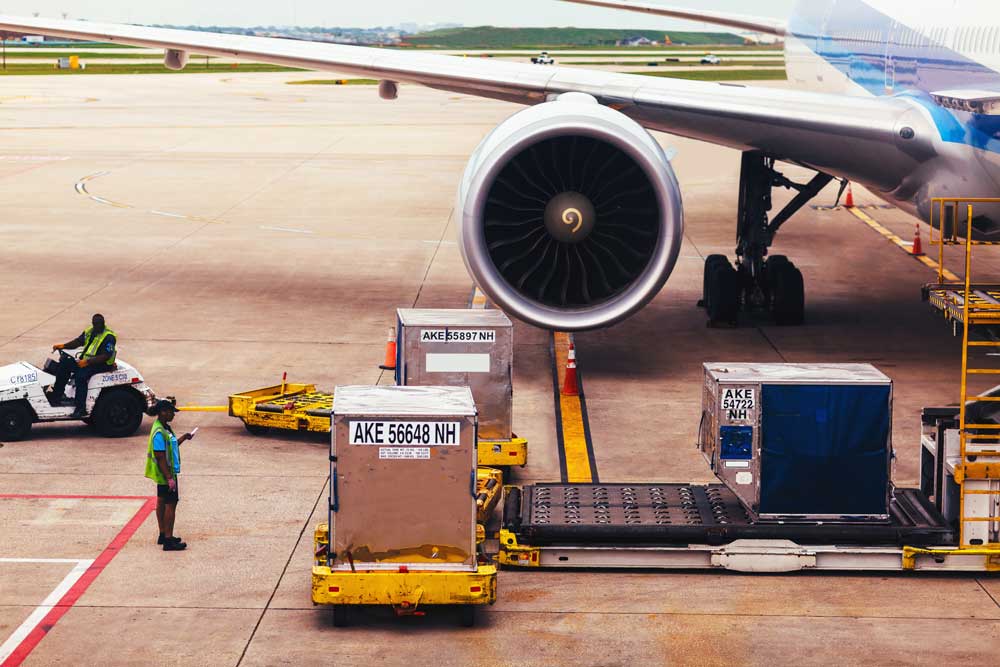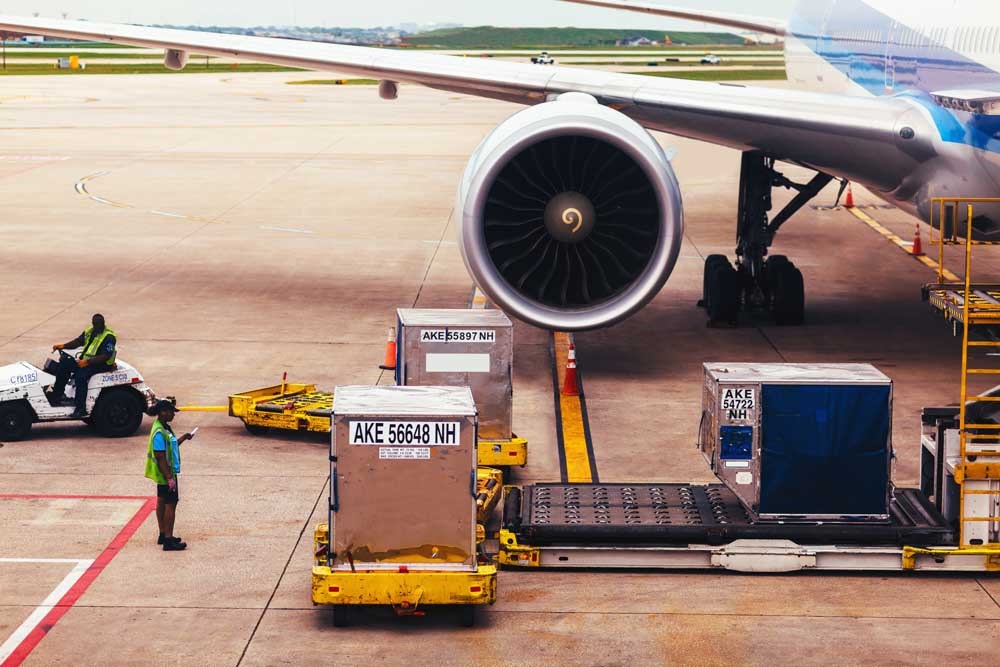When the industry discusses predictive maintenance, it tends to only refer to ‘predictive condition-based maintenance’ – the use of relevant equipment and factory data to apply an equipment degradation model to predict the equipment’s remaining useful life (RUL).
But increasingly, the aviation supply chain is using Prognostics & Health Management (PHM) solutions to inform its decisions in the area.
PHM solutions also take into account ‘Non-predictive condition-based maintenance’ – the scheduled monitoring of equipment and potential maintenance when an equipment health indicator reaches a predetermined threshold – and scheduled maintenance performed on a fixed, calendar-based schedule.
PHM solutions are the bridge between failure mechanisms and system lifecycle management. They use data to enable the early detection of impending or incipient faults, informing logistical decision-making based on predictions.
A typical PHM solution combines scheduled maintenance, condition-based maintenance, and predictive maintenance to enable effective cost versus performance decisions.
Nearly always, it is the most viable option as it maximises the ROI (return on investment) for equipment.
DISCOVER:
Six cost-cutting strategies for airlines here.
Delivering significant savings
Lufthansa Technik Group is one of the MROs leading the way when it comes to PHM solutions and predictive maintenance, and they are already seeing results.
According to Jan Stoevesand, Lufthansa Technik Group Senior Director of Analytics and Data Solutions, the PHM solutions have delivered tremendous savings.
“Predictions will always help safety—but in regards to cost reduction, we have identified two areas where predictions can make a tremendous difference: These are reducing MRO costs and reducing operational instances,” he explains.
“There’s one problem with this. We’ve been working heavily with the reduction of MRO costs for the last 40 years, so the potential savings in this area is quite small. The real savings are in the avoidance of operational instances. That’s where the money is. However, you really need a set of KPIs to be able to tell if all the investments into predictive maintenance really work – so I think the KPIs are just as important a success criteria as the PHM-solution itself.”
Wouter Kalfsbeek, E&M Big Data Lead at KLM, agrees and believes that the potential benefits of predictions will be much greater in the future when systems are connected across the supply chain. This movement towards ultimate connectivity is also known as Internet of Things, in short IoT.
“If we are able to extend to a larger proportion of aircraft systems in the coming years, we’ll be able to tie more closely with the airline operations, and then you can really make massive cuts on the ground time and disruption times. I think this is when it really gets exciting – when everything becomes connected,” he explains.
“We’re just in the beginning now, with small systems working independently, but potentially we could transform all maintenance intervals so they are based on data and thus stop doing conditional checks. It’s complex, but I think we will get there.”

Of value to the entire chain
PHMs not only generate value for airlines, but for the whole supply chain – and Brandon Keener, a Senior Director at UTC Aerospace Systems, is already a big fan.
“Making predictions for an airline is directly tied to logistics and the whole supply chain. In a perfect world, the aftermarket supplier will be able to see when customers need a spare, and in this way, the supply chain is getting much more sophisticated by having this call in advance warning three to four weeks out,” he explains.
“This extends all the way down to the OEM side – an aftermarket or repair shop is, after all, only as good as the place where they get their OE components. So the more visibility you can put into the system with predictive analytics, the more time you give everyone to prepare.”
The end-customers will also benefit, as airlines are able to reduce costs and increase safety.
“We certainly see predictive analytics directly benefiting the passenger experience. Ultimately, the benefits will translate into lower airfare costs and fewer delays,” adds Keener.
LEARN MORE ABOUT:
Five emerging technologies that will change the MRO industry.
How to evaluate their success
Traditionally, failures don’t have a positive impact on businesses but in the case of data analytics and machine learning, failures are key. This is what drives and improves the accuracy of algorithms. Without a constant flow of new observations, the PHM solutions will never reach their full potential.
There are two important aspects to consider when evaluating the success of PHM solutions, contends Stoevesand.
“As I already said, a stable KPI system is really important, in order to prove that the reliability goals are met,” he explains.
“Secondly, it’s critical to ensure that the people who do the analytics are connected to the MRO or shop people. You have to constantly improve the algorithm so they continue to stay accurate, and the people on the floor are crucial in this matter. They need to look at the parts on which the system has predicted a failure and investigate if the predictions are actually correct. Then they must report back to the data team who can feed this new information into the system. It’s so important to establish this constant feedback loop in the organisation.”
LEARN MORE ABOUT:
Predictive maintenance & the road to a proactive supply chain.
Wouter Kalfsbeek from KLM’s data team again agrees.
“Failures are good. They help develop better prognostics and it’s really important that we learn from these mistakes," he enthuses.
"If you come to a point with too few failures to train the models, it will impact the performance of the system. I think this is why we could all benefit from sharing these failures with each other because everyone will be able to develop and use better algorithms."
Wouter Kalfsbeek from KLM also believes data collaboration is the way forward, but he also raises an important issue that would occur alongside a potential democratisation of data.
This is the ‘Secret Sauce’
The growing popularity of predictive maintenance has created an influx of PHM solutions coming onto the market. As an airline or MRO, choosing the right solution among the many offerings and suppliers can be a make or break factor, but how do you determine whether or not the solution fulfils your needs?
“I think the most important question to ask yourself when evaluating a PHM solution is to identify whether or not the product ends with the prediction or with the fulfilment,” asserts Stoevesand.
“Find out where the product connects with the physical world. This is where you start to save money. Everything before this, such as getting the data, cleaning the data, doing analytics and generating predictions will cost you money, it’s the last step that will save you money.”
RELATED ARTICLE:
Leading OEMs on Next-Generation Engines and Future Challenges.
Keener from UTC Aerospace Systems has observed the huge influx of new suppliers in recent years with interest.
“As a supplier, it’s honestly a bit of a wild west out there. There’s a huge spectrum of suppliers offering different things to different operators to fulfil their needs. Some promise that they can support whole fleets with their analytics and proprietary algorithms, others provide a laser-like focus on solving a particular problem,” he says.
“At UTC Aerospace Systems, we think there are three success criteria to a truly valuable PHM-solution: The design, the team that has to build and develop the analytics, and lastly whether or not these have access to the return data from the MRO. We certainly see other analytics or solutions that give the customers what they want without ticking all three criteria, but from our perspective, this is the ‘Secret Sauce’.”
An excellent place to build from
However, harvesting rewards aren’t necessarily about how much you are willing to invest in a complex algorithm.
The extensive knowledge that the engineers have is an excellent place to start when developing computer models, notes Stoevesand.

“The complexity of the algorithm doesn’t correlate with the savings. Extremely complex algorithms are not necessary to save money. If you are starting out with a predictive prognosis program, you can gain a lot of value by focusing on the knowledge the engineers already have,” he says.
“This knowledge is very stable as it’s derived from the physical world with years of testing. Of course, we need to combine this with machine learning, but we shouldn’t forget to take advantage of the resources we already have.”
EXECUTIVE PERSPECTIVE:
How to foster an innovative environment in organisations.
A call for data democratization
This leads us to another vital part of the discussion; sharing of the data. Part failures within a typical fleet usually don’t happen by their thousands, so gathering enough data to make accurate computer models can be a real issue in the aviation industry. That’s why a lot of the professionals working with predictive maintenance and data analytics are calling for collaboration in this area.
»As an industry, we need to separate data acquisition from data usage. We have to build a Chinese wall between these two things. We should collaborate on data acquisition and then compete on data usage – it just makes so much more sense for all of us,« says Jan Stoevesand.
Wouter Kalfsbeek from KLM also believes data collaboration is the way forward, but he also raises an important issue that would rise alongside a potential democratization of data.
»We all have data and are able to generate value for ourselves. If we put it together, we can generate even more value, but how do you divide that value so everyone benefits more or less equally? That’s the question we haven’t really figured out yet,« he explains.
But who really owns the data from aircraft? Is it the operators? The aircraft manufacturers? The panel widely agrees that it should be the operators who own the data, but there’s no clear standard for this in the industry.
»Data ownership is another important discussion. I think we all need to agree that the aircraft operators are the owners of the data. At Lufthansa, we developed a simple model for this, and we call it the three C’s. Control, choice and competition,« says Jan Stoevesand and continues:
»It means that the operator of the aircraft controls the data and gets it encrypted. They can choose what to do with the data and whom to share it with. This will lead to healthy competition amongst the companies that are able to turn data into insights. This competition is good – it will help us and the industry as a whole to develop better prognostic solutions.«

Evaluating the PHM-Solutions on the Market
The growing popularity of predictive maintenance has created an influx of PHM solutions coming into the market. As an airline or MRO, choosing the right solution among the many offerings and suppliers can be a make or break factor, but how do you determine whether or not the solution fulfils your needs?
»I think the most important question to ask yourself when evaluating a PHM solution is to identify whether or not the product ends with the prediction or with the fulfilment. Find out where the product connects with the physical world. This is where you start to save money.
Everything before this, such as getting the data, cleaning the data, doing analytics and generating predictions will cost you money, it’s the last step that will save you money,« says Jan Stoevesand, Senior Director of Analytics and Data Solutions at Lufthansa Technik Group.
Brandon Keener, the Senior Director at UTC Aerospace Systems recognises the huge influx of new suppliers in recent years.
»As a supplier, it’s honestly a bit of a wild west out there. There’s a huge spectrum of suppliers offering different things to different operators to fulfil their needs. Some promise that they can support whole fleets with their analytics and proprietary algorithms, others provide a laser-like focus on solving a particular problem,« he says and adds:
»At UTC Aerospace Systems, we think there are three success criteria to a truly valuable PHM solution: The design, the team that has to build and develop the analytics, and lastly whether or not these have access to the return data from the MRO. We certainly see other analytics or solutions that give the customers what they want without ticking all three criteria, but from our perspective, this is the “secret sauce”.«
In these early stages of PHMs, harvesting rewards aren’t necessarily about how much you are willing to invest in a complex algorithm. The extensive knowledge that the engineers have is an excellent place to start when developing computer models, notes Jan Stoevesand from Lufthansa who gets the last word in the debate:
»The complexity of the algorithm doesn’t correlate with the savings. Extremely complex algorithms are not necessary to save money. If you are starting out with a predictive prognosis program, you can gain a lot of value by focusing on the knowledge the engineers already have. This knowledge is very stable as it’s derived from the physical world with years of testing. Of course, we need to combine this with machine learning, but we shouldn’t forget to take advantage of the resources we already have.«
